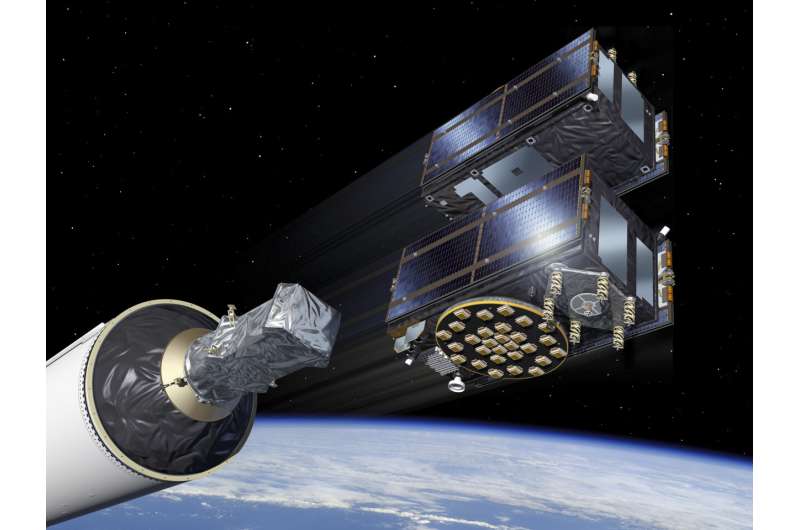This article has been reviewed according to Science X's editorial process and policies. Editors have highlighted the following attributes while ensuring the content's credibility:
fact-checked
trusted source
proofread
Two new satellites join the Galileo constellation

The European Galileo navigation system has two more satellites in orbit following their launch in the early morning of Sunday, 28 April, at 01:34 BST/02:34 CEST. With 30 satellites now in orbit, Galileo is expanding its constellation, increasing the reliability, robustness and, ultimately, the precision, benefiting billions of users worldwide.
Already the most precise satellite navigation system in the world and the largest European constellation of satellites, Galileo has been operational since 2016, when Initial Services were declared. Galileo is making a difference across the fields of rail, maritime, agriculture, financial timing services and rescue operations.
Many strategic sectors depend on it: Already 10% of the EU's yearly GDP relies on satellite navigation and this is set to increase. From finding our way, to supporting Search and Rescue activities and providing ultra-precise timestamps for all kinds of institutional and commercial applications, Galileo is integral to our everyday lives.
Since the conception of Galileo, 38 Galileo satellites have been developed and tested by ESA and European industry for the EU's Galileo program. Of these, four In-Orbit-Validation and 26 Full Operation Capability satellites have been placed in orbit with 12 launches.
This launch is taking place only a few days after the new Public Regulated Service (PRS) signals started to be broadcasted. This encrypted navigation service is specifically designed for authorized governmental users and sensitive applications, contributing to increase Europe's autonomy and resilience in the critical domain of satellite navigation.
The eight remaining Galileo First Generation satellites are ready to be launched soon, after which a Second Generation (G2) of satellites will start joining the constellation, expected in 2026 with the Ariane 6 launcher.
ESA, as Galileo's design authority and system development prime, is working with European industry to develop the G2 satellites that will revolutionize the fleet with enhanced capabilities. G2 satellites will use electric propulsion and host a more powerful navigation antenna, more and even better atomic clocks and fully digital payloads.
Provided by European Space Agency





















